Rediscovering the Silk Road: A Modern Exploration of Ancient Cultural Ties
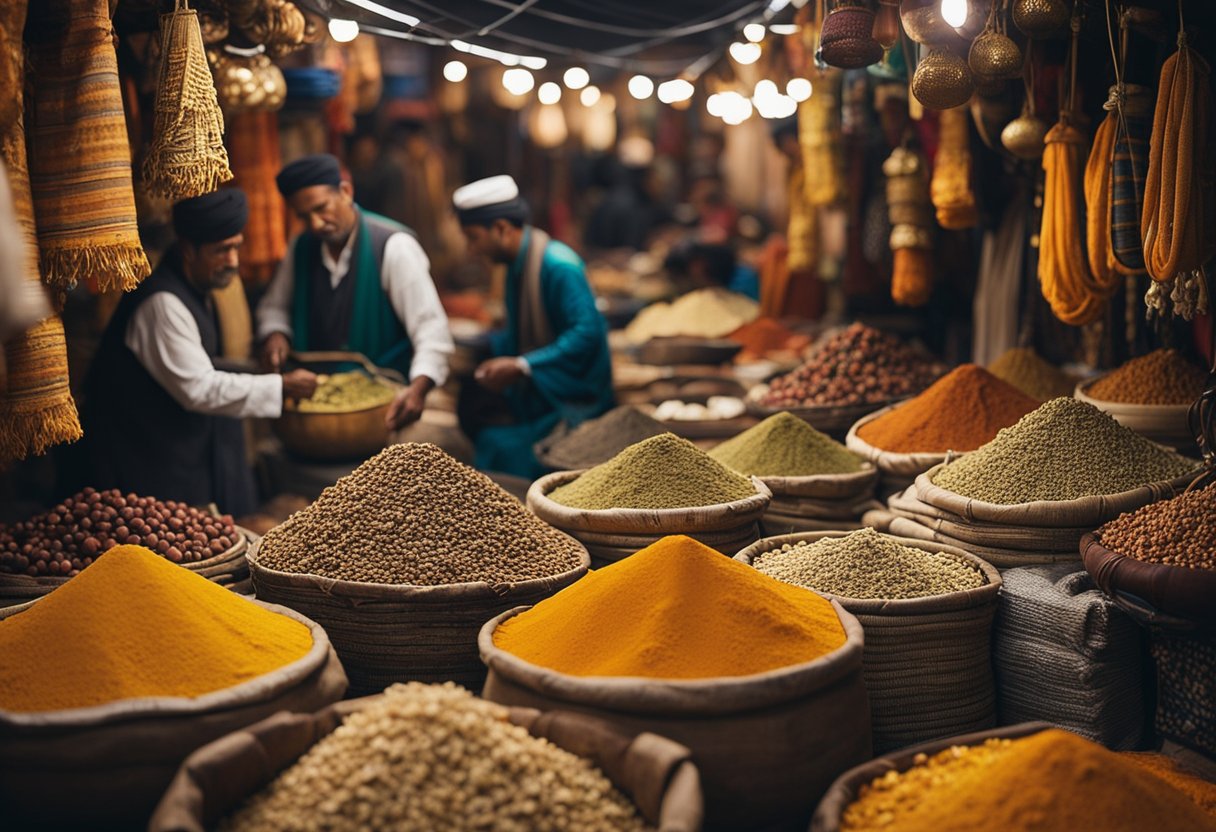
Updated On: April 22, 2024 by Noha Basiouny
The Silk Road, a historical network of trade routes connecting the East and West, stands as a symbol of the cross-cultural exchange that has shaped civilizations across Asia, Europe, and beyond. For centuries, this intricate web of pathways not only facilitated the movement of commodities, such as the eponymous silk, but also the fluid exchange of ideas, traditions, and knowledge. The complex interactions along the Silk Road have left an indelible mark on the world, influencing everything from language to technological advancements.
Our exploration into the Silk Road’s past illuminates the ways in which this ancient corridor served as a melting pot of cultures, blending the artistic and scientific contributions of various societies. These exchanges were beneficial not only for commerce but also for the broader cultural and intellectual development of the regions connected by the Silk Road. By examining the legacy of the Silk Road, we gain insight into the mutual influence and shared history that continues to resonate in the present day, informing our understanding of globalization and intercultural relations.
Table of Contents
The Historical Context of the Silk Road
Before delving into the intricate history of the Silk Road, we must note its role as a catalyst for cultural, religious, and material exchanges between the East and West.
Rise and Role of the Silk Road
The inception of the Silk Road can be traced back to the Han Dynasty in China, which sought to establish commercial ties with the Western regions. Our understanding of this network of trade routes is enhanced when we consider the multifaceted exchanges that occurred: not just in silk and goods but in ideas and religions such as Buddhism, Zoroastrianism, Christianity, and Islam. The Silk Road’s influence stretched from the heart of China across Central Asia, reaching the depths of Europe and India, creating a melting pot of cultural and economic activity.
Key Civilisations and Empires
Strategically positioned cities like Samarkand, Turfan, Khotan, and Dunhuang played crucial roles as hubs of trade and cultural transmission. Under the dominion of various empires from the Persian to the onset of Islamic caliphates, the Silk Road was an economic artery that connected diverse regions, fostering a vibrant exchange of commodities and beliefs. Each civilisation that thrived along these routes imprinted its legacy, be it through the spread of Buddhism from India to China or the exchange of scientific knowledge from Iran to the West.
Cultural Interactions and Exchanges
Exploring the rich tapestry of cultural exchanges along the Silk Road reveals a history of profound interactions that shaped the civilizations which flourished from Xinjiang to Central Asia and beyond.
Artistic and Architectural Influences
The Silk Road was a conduit for the fusion of different artistic styles, reflecting the diverse cultures that engaged in trade and dialogue. In regions like Central Asia and Xinjiang, we see exquisite examples of art, such as the detailed woven textiles sold for notable sums at auctions, demonstrating the blend of Eastern and Western motifs. Architecture, too, stands as a testament to these exchanges, with numerous sites along the Silk Road showcasing elements from Persian, Sogdian, and other traditions that have blended seamlessly with local styles.
Philosophical and Religious Transmission
In addition to art and architecture, the Silk Road facilitated the transmission of religious and philosophical ideas between the East and West. Buddhism, for instance, found its way from India into China and flourished, as exemplified by the spread of the religion throughout the Western Regions. Christianity, Islam, and Manichaeism also travelled these routes, imparting new religious concepts to the regions they reached. Philosophical ideas were equally exchanged, significantly influencing the beliefs and practices across civilizations along the Silk Road.
Commerce and Trade Along the Silk Road
The Silk Road was not merely a single route but a complex trade network that facilitated an extensive exchange of commodities, deeply influencing the economies and cultures of the regions it connected.
Commodities and Goods Traded
Silk Road: It was the central arterial trade network linking China, Central Asia, the Persian Gulf, and Europe. Diverse commodities flowed ceaselessly along these routes, shaping a vibrant spectrum of economic and cultural activity.
- Tea and Silk: From China, traders carried exquisite silk, valued for its beauty and rarity in the West, and tea, which gradually became a staple in European society.
- Spices and Precious Metals: Coming from India and Southeast Asia, traders brought spices that were eagerly sought after for culinary and medicinal purposes. In exchange, precious metals like gold and silver flowed eastward, enriching local economies along the way.
- Glass and Exotic Goods: The Eastern Mediterranean contributed fine glassware, while Central Asia introduced exotic goods such as furs and rugs to distant markets.
These commodities were more than mere goods; they were the harbingers of new ideas, leading to unprecedented interactions between diverse cultures.
Economic Impact on Societies
Global Economy: The Silk Road was instrumental in the development of the global economy, as it provided a conduit for not just goods but also knowledge, religion, and culture.
- Economic Benefits for Cities: Cities and regions on the Silk Road prospered, becoming bustling centres of commerce where information and goods from around the known world were available.
- Exchange of Goods and Ideas: As a nexus for trade, the Silk Road facilitated the exchange of goods and ideas, contributing to significant advancements in various fields, including art, science, and technology.
We recognise the enduring legacy of the Silk Road, acknowledging how it laid the foundations for modern international trade and cultural exchange.
Technologies and Innovations Spread
In the tapestry of cultural exchanges along the Silk Road, the spread of technologies and innovations marked significant milestones in shaping the modern world. These exchanges were pivotal in forming a foundation for a global economy and advancing human knowledge across continents.
Agricultural and Manufacturing Advancements
The Silk Road facilitated the transfer of numerous agricultural techniques and manufacturing processes between civilisations. We witnessed the dispersal of crops like cotton and fruits, along with irrigation methods that significantly boosted agricultural productivity. In terms of manufacturing, sericulture and paper-making techniques are two notable innovations that traversed regions through these trade networks:
-
Sericulture: The cultivation of silkworms for silk began in China and was a closely guarded secret for centuries. Through the Silk Road, the knowledge of silk production spread to other parts of Asia and eventually reached Europe, contributing to thriving textile industries.
-
Paper-making: The method of producing paper was a Chinese invention that changed documentation and education. Its spread across the Silk Road enabled the recording and dissemination of information, revolutionising communication and bureaucracy.
Scientific Knowledge and Discoveries
Beyond tangible goods, the Silk Road was a conduit for intellectual exchange, where scholars and traders shared scientific knowledge and discoveries. We can attribute the advancement of numerous disciplines, including science, mathematics, astronomy, and medicine, to this historical network:
-
Astronomy: Astronomical knowledge, such as understanding planetary movements and calendar systems, saw significant cross-cultural transmission. This exchange contributed to more refined astronomical texts and the development of sophisticated instruments for celestial navigation.
-
Medicine: The Silk Road also played a crucial role in the exchange of medicinal practices and pharmaceutical knowledge between civilisations. Techniques in diagnosing and treating diseases, along with a plethora of herbal remedies, swiftly spread along the route, enriching medical traditions across continents.
In summarising the breadth of technological and innovation exchanges on the Silk Road, it is clear that the route was instrumental in laying the groundwork for present-day global connectedness. Through our retelling of these historical narratives, we find a relentless thread of knowledge sharing that continues to influence our current understanding of the world and our place in it.
The Silk Road’s Linguistic and Manuscript Heritage
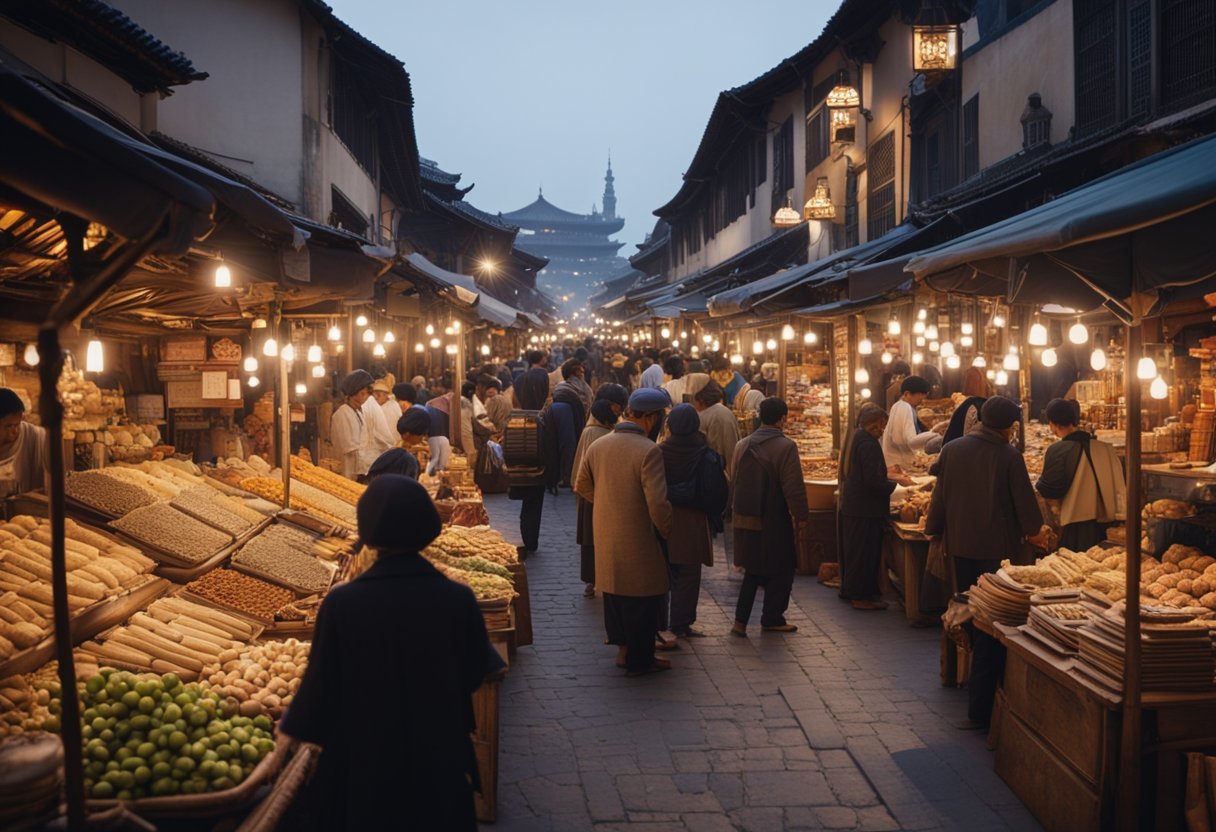
In exploring the Silk Road’s cultural exchanges, we uncover the rich linguistic and manuscript heritage that shaped interactions between East and West. This comprehensive journey into the Silk Road sheds light on diverse languages and the persistence of historical documents that have survived through the ages.
Ancient Languages and Scripts
We encounter a variety of languages and scripts along the Silk Road, which served as the veins of intellectual exchange. Manuscripts and inscriptions found in tombs and ancient ruins reveal a linguistic landscape once thriving with languages such as Sogdian, a primary lingua franca of Central Asia, and Kuchean, among others. Archaeological findings in Dunhuang and along China’s frontier regions have provided substantial evidence of these ancient tongues, recorded on documents that include everything from official correspondences to private literature.
- Sogdian: A key language for trade and communication across Central Asia.
- Kuchean: Related to Tocharian languages, it was once spoken in the Kingdom of Kucha.
Preservation of Historical Records
Our quest uncovers how historical records and manuscripts have been preserved, offering invaluable insights into the past. The conservation of documents from locations such as the Silk Road city of Dunhuang includes extensive collections of texts which tell us about the social and economic fabric of times long gone. From religious scripts translating Buddhist doctrines to financial ledgers detailing trade, these historical records etch a vivid picture of life across various regions connected by the Silk Road. The evidence found within buried tombs and monastic caves has been pivotal in understanding the historical context of this network of routes.
- Dunhuang Manuscripts: A treasure trove of texts revealing the daily life and culture in a key Silk Road outpost.
- Central Asian Inscriptions: They serve as testimonies of the cultural and linguistic diversity found within the heart of the Silk Road.
Rediscovering the Silk Road: Cultural Exchanges Between East and West
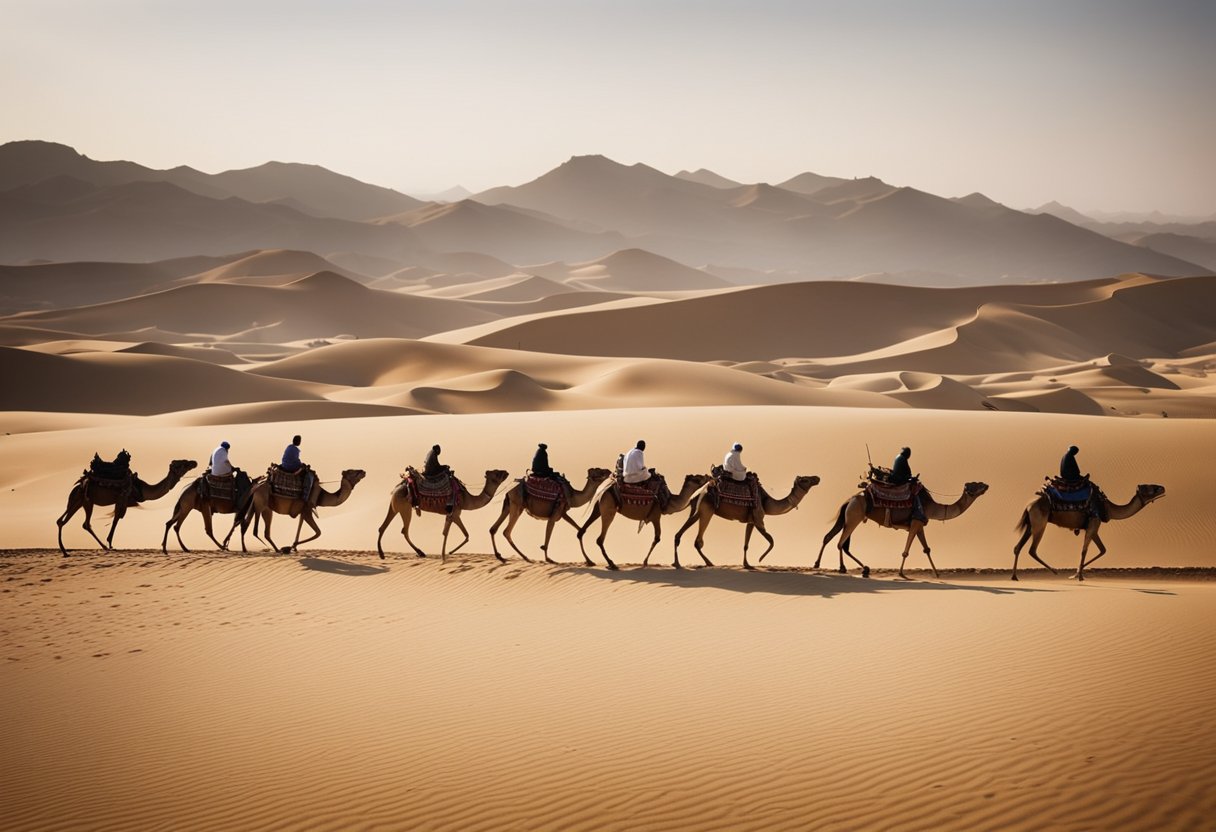
Religious Movements and the Silk Road
The Silk Road functioned as a conduit not only for merchandise but also for the profound exchange of religious and philosophical ideas between the East and the West. At its core, the Silk Road facilitated the expansion of major world religions and the rise of syncretic beliefs, profoundly influencing spiritual landscapes from East Asia to West Asia.
Expansion of Major World Religions
Major world religions, such as Buddhism, Christianity, Islam, and Zoroastrianism, found fertile ground for expansion along the Silk Road. Travelers and missionaries played pivotal roles in the transmission of religious ideas. For example, Buddhism spread from India across Central Asia to East Asia. Tangible evidence of these movements is seen in the rich heritage of religious art and architecture that dots the Silk Road, from cave temples to intricate frescoes.
Similarly, the spread of Islam, emerging in the 7th century in West Asia, was facilitated by merchants and adherents travelling the Silk Road. It became prominent in Central Asia before expanding to the East and South. Christianity and Zoroastrianism also saw significant movement along these routes. Christianity, notably through the efforts of Nestorian missionaries, left traces in Asia, as did Zoroastrianism, which once thrived in Persia.
Syncretism and the Establishment of New Sects
The interaction along the Silk Road led to syncretism and the establishment of new religious sects. Manichaeism, for instance, emerged as a blend of Zoroastrianism, Christianity, and other philosophical ideas, gaining popularity particularly in China before being suppressed. The amalgamation of different beliefs reflected the diverse cultural exchanges taking place.
These sects often merged doctrines from various religions, resulting in unique spiritual expressions that could appeal to a broad range of followers. The intermingling of religious thoughts fostered a cultural and spiritual pluralism that characterised many of the regions connected by the Silk Road, evidence of which persists in religious practices to this day.
Arts, Fashion, and Music Along the Silk Road
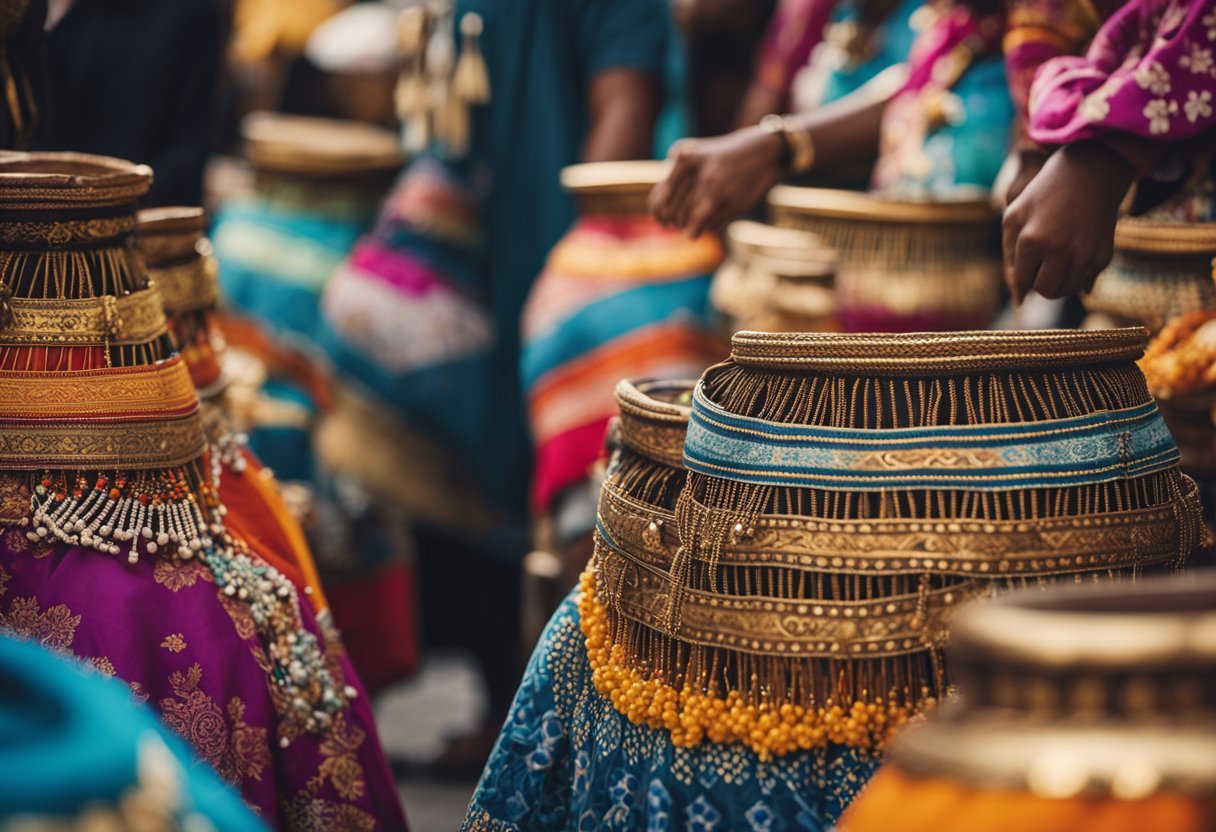
The Silk Road, an ancient network of trade routes, served as a melting pot for the arts, fashion, and music of Asia and Europe. The constant flow and interchange among traders, artists, and musicians led to a rich tapestry of cultural heritage.
Development of Unique Artistic Styles
Throughout the history of the Silk Road, the interaction between East and West nurtured the development of unique artistic styles. Chinese influences merged with Central Asian and even Indian motifs, leading to a fusion of different artistic styles. This exchange is particularly evident in the evolution of ceramic designs and architectural styles. Nobles and traders across the Silk Road commissioned art that reflected their diverse backgrounds, resulting in hybrid forms that still captivate us.
The artwork created during this period was not only beautiful but also utilitarian. Silk Road ceramics, highly prized for trade, featured intricate designs blending Chinese techniques with Central Asian richness. In Central Asia, particularly in regions influenced by the Sogdian culture, art became a blend of Eastern and Western aesthetics. These pieces ranged from exquisitely painted earthenware to detailed silk tapestries, often exchanged or given as luxury gifts among the nobility.
Exchange in Cultural Tastes
The Silk Road’s role as a conduit for cultural exchange is equally manifest in the domains of fashion and music. Traditional clothing styles and musical forms were always evolving due to this interaction. As Asian textiles, particularly silk, and garments were traded to the West, they were incorporated into European fashion, sometimes reserved for royalty and the upper class due to their rarity and cost.
In the realm of music, the Silk Road facilitated the spread of both instruments and musical genres across continents. Instruments like the lute travelled west from Asia and evolved into the European lute, a mainstay in classical Western music. Meanwhile, musical scales and melodies from Europe found their way eastward, adapting to the local cultures of China, India, and beyond. This exchange led to an unparalleled enrichment of the musical heritage on both continents, shaping the course of human civilization in terms of artistic expression.
The Impact of the Silk Road on Modern Society
The Silk Road not only shaped the ancient world but also left a lasting mark that continues to influence our modern society in realms of culture and economy.
Contemporary Cultural and Economic Influences
We observe that the Silk Road facilitated an intermingling of cultures and ideas that have persisted into modern times. This network of trade routes once connected Asia with the larger global economy, initiating a blend of East and West that brought about unparalleled cultural exchanges. Today, these mingled influences are evident in the varied cultural practices, artistic expressions, and culinary traditions found around the world. The global economy also mirrors this historical interconnectivity, with Asia playing a central role in trade and the exchange of goods akin to its historical counterpart.
Legacy and Revival in 21st Century Initiatives
Our recognition of the Silk Road’s role in fostering past prosperity has sparked initiatives aiming to revive its spirit in the 21st century. The concept of the New Silk Road or Belt and Road Initiative is a prime example, seeking to reestablish and expand on the economic corridors between East and West, which could lead to a new era of economic and cultural prosperity. The legacy of the Silk Road is thus embodied in these contemporary projects, promoting the exchange of new ideas and bolstering the economy through increased connectivity between modern civilizations.
By appreciating the cultural and economic influences that have stemmed from the Silk Road, we are reminded of the enduring impact of historical intercultural connections and their power to shape our world.
Silk Road in Literature and Thought
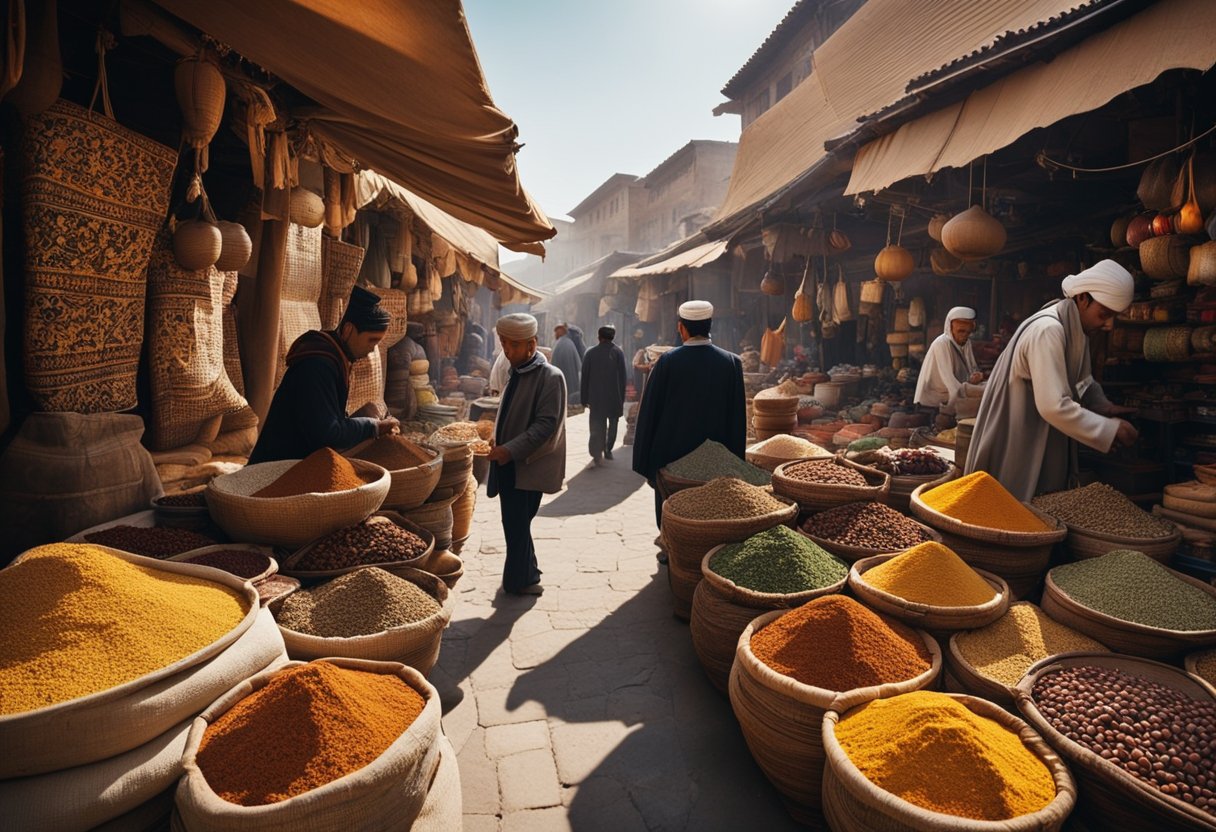
The Silk Road not only served as a conduit for the exchange of goods but also acted as a medium for the spread of knowledge and philosophy. Texts and ideas traded along this route have left a profound mark on literature and intellectual thought.
Representation in Classical and Modern Texts
Classical texts carry tales of the Silk Road’s influence, from stories woven with details of silk and spices to accounts of exotic civilisations and philosophies that crossed from Asia into the heart of Europe. Renowned figures like Wang Xizhi, known as the Sage of Calligraphy, influenced the literary heritage with their works, which found their way onto the Silk Road. The exchange of knowledge wasn’t a one-way street; European scholars’ works were also translated, carrying Western thought back to the East.
Modern texts continue this legacy, showcasing the Silk Road’s historical role in shaping the narratives of different cultures. Scholars and travellers offer a rich tapestry of innovations in their manuscripts, many of which have been preserved in historical records and are still studied today. These written works reflect the extensive cultural exchange that contributed to the development of a more interconnected world.
Philosophical Impact and Reflections
The Silk Road did more than facilitate trade; it was instrumental in the intellectual exchange between distinct philosophies. Ideas from Silla, Confucianism, and the great philosophies of the Greek and Roman periods travelled in the company of merchants and monks. These ideas often found fertile ground in foreign lands, influencing local thought and leading to new innovations in philosophy.
Reflecting on the historical impact of the Silk Road, we recognise it as a catalyst for the global spread of knowledge. It served as a bridge connecting the East and the West, bringing together scholars and fostering dialogues that would shape world thought for centuries. The philosophies exchanged along these routes helped nurture the foundations of the modern world’s diverse intellectual landscape.
Geopolitical Dynamics of the Silk Road Region
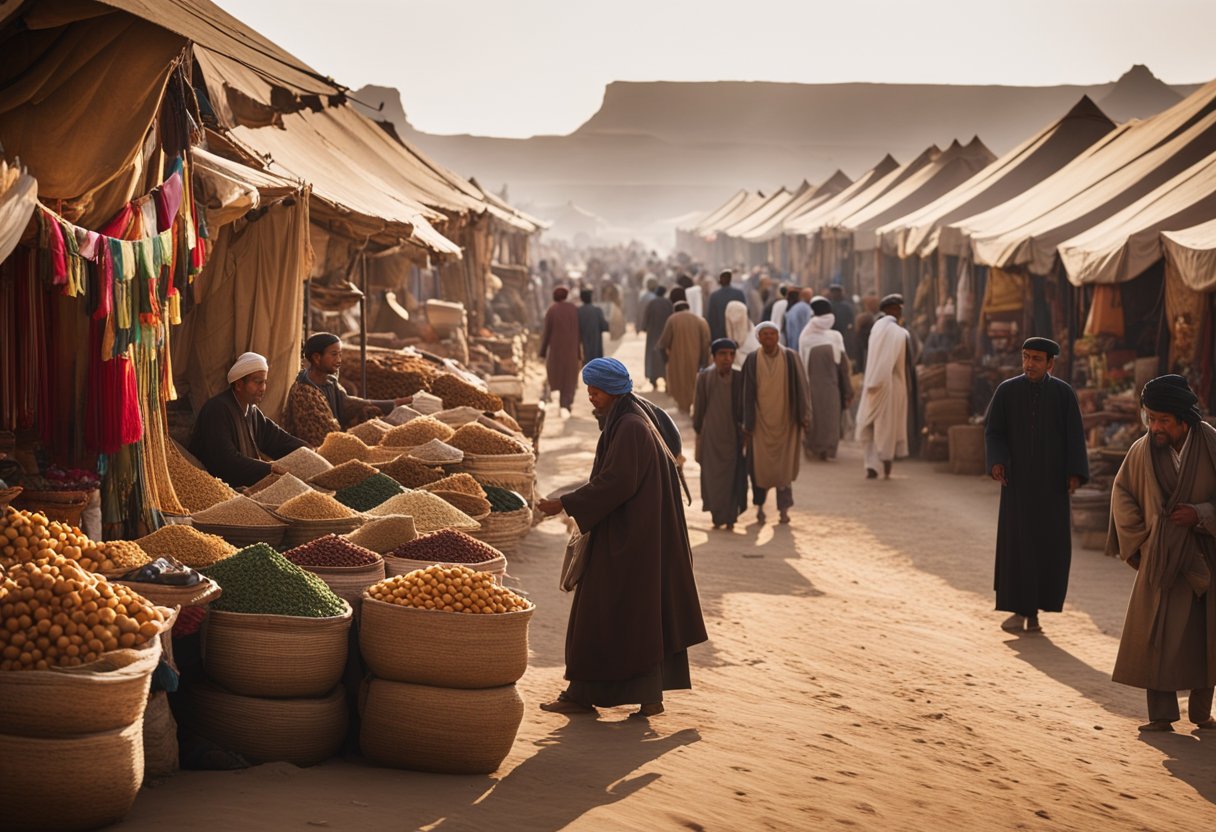
The Silk Road’s historical routes have evolved to encompass complex geopolitical dynamics, influencing regional politics and modern geopolitical interests.
Influence on Regional Powers and Politics
The Silk Road was more than a collection of trade routes connecting Asia to Europe; it facilitated significant cultural and economic exchanges across Central Asia, West Asia, and the Mediterranean. This network, sprawling from China through the Persian Gulf to the coast of the Mediterranean, played a pivotal role in shaping the geopolitics of these regions. Trade along the Silk Road enabled cities to prosper, influencing the rise and fall of empires and affecting the political landscape across continents.
China, a key player then and now, is rejuvenating these routes through initiatives like the Belt and Road Initiative (BRI), which seeks to bolster trade and stimulate economic growth across Asia and beyond. Meanwhile, Russia and Iran are asserting their influence over Central Asia and the Caucasus, looking to solidify their status as regional powers through economic cooperation and strategic partnerships centred around these historic routes.
Modern Geopolitical Interests
Today, the Silk Road’s significance transcends mere history; it’s at the heart of one of the 21st century’s foremost geopolitical strategies. The modern incarnation of these routes has prompted a surge in geopolitical dynamics, with global superpowers and regional states vying for economic and strategic advantages.
Europe seeks to secure diversified trade links with Asia amidst a rapidly changing global order. Meanwhile, West Asia and the countries around the Persian Gulf are leveraging their geographical positions to become critical hubs of commerce and diplomacy between the East and West. The resurgence of the Silk Road presents new opportunities for commerce and international cooperation while also throwing up a myriad of strategic challenges for both incumbent powers and emerging contenders in this region.
The Future of Cross-Cultural Exchange
As the Silk Road exemplifies the early globalisation of trade and culture, we anticipate an even more interconnected future. Our focus will be on evolving trade and diplomatic relations, as well as cultural education and preservation initiatives that foster mutual understanding and respect across continents.
Evolving Trade and Diplomatic Relations
Global trade is becoming increasingly sophisticated, with digital platforms enabling faster communication and transactions. We expect to see a rise in “digital Silk Roads,” where technology aids in creating seamless economic corridors. Innovations in transport, such as the Belt and Road Initiative, are set to expand connectivity, potentially mirroring the influence of the historical Silk Road on trade and diplomacy. Governments and international entities will likely emphasise policies that facilitate cross-cultural collaboration, aiming to create a stable environment for this exchange to flourish.
Cultural Education and Preservation Initiatives
Cultural education will play a pivotal role in fostering respect and understanding of diverse traditions. Initiatives such as immersive cultural exchange programmes and virtual heritage experiences will be vital in preserving the heritage of the Silk Road. Collaborative preservation projects can act as learning tools for future generations, ensuring sustained interest in and conservation of historical sites and art forms. Embracing technology, we might see more sophisticated digital archives and 3D reconstructions of artefacts, providing global access to the treasures of the Silk Road.
Through continued collaboration, we aim to maintain and enrich the tapestry of diverse cultures that the Silk Road represents.
Frequently Asked Questions
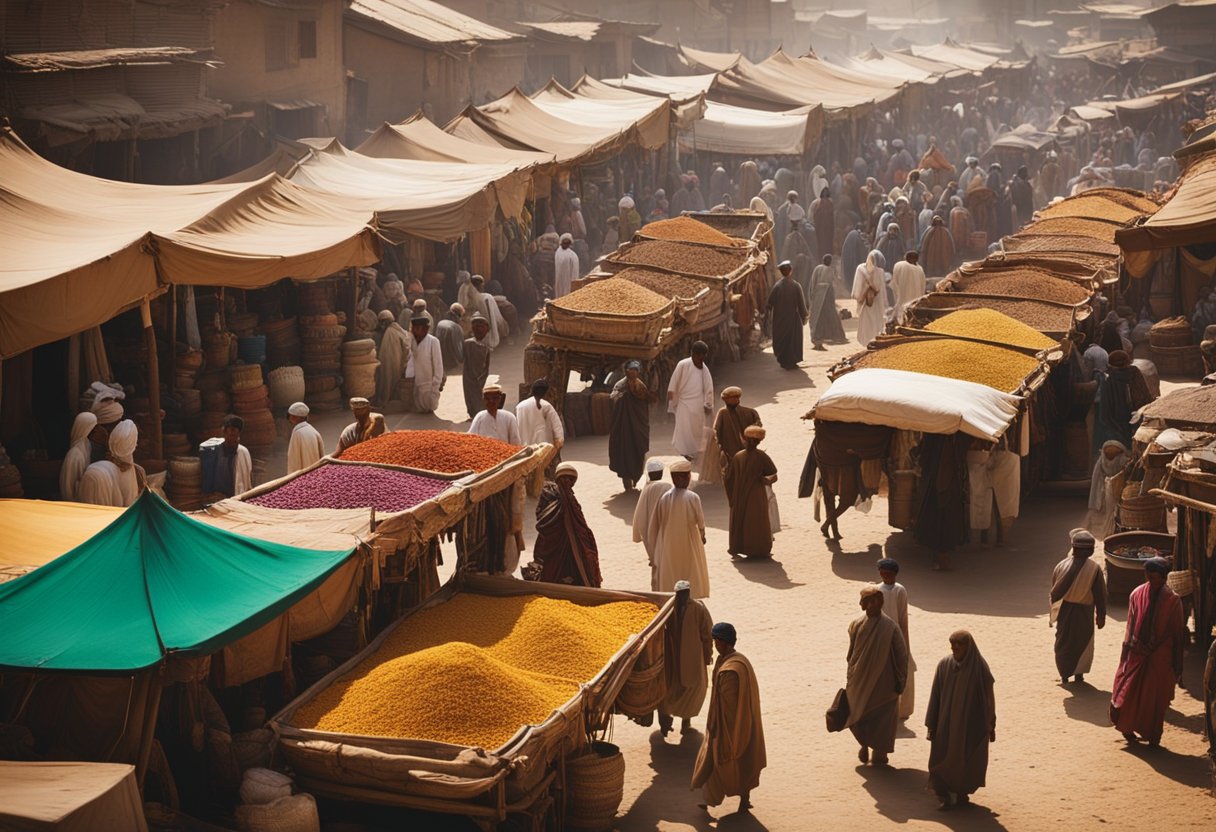
In this section, we address some of the most common queries regarding the Silk Road’s role in cultural and knowledge exchange between the East and the West. Our insights delve into the profound impacts on arts, science, economics, politics, religion, and cuisine.
How did the Silk Road facilitate the exchange of culture and knowledge between the East and West?
The Silk Road was more than a conduit for trade; it was a crucial channel for cultural exchange. Ideas, art forms, and scholarly knowledge flowed as freely as goods carried by traders, scholars, and monks traversing the network. The exchange of culture and knowledge between civilisations flourished through dialogue, fostering advancements in many spheres of life.
What are notable contributions to arts and sciences exchanged via the Silk Road?
Significant contributions exchanged via the Silk Road include artistic techniques, such as papermaking and printing from East Asia, and Greco-Buddhist art, which merged Hellenistic and Buddhist styles. In sciences, technologies and knowledge regarding astronomy, mathematics, and medicine were disseminated, enriching societies along the way.
In what ways did the Silk Road influence economic and political relations between Eastern and Western civilisations?
The Silk Road enabled the establishment of long-distance trade routes, which in turn led to economic interdependency and the rise of powerful cities. These economic ties often necessitated political alliances and agreements, influencing the structure of power and diplomacy between empires and nations across continents.
Can you identify specific cultural elements that were transmitted from east to west, or vice versa, through the Silk Road?
Specific cultural elements transmitted via the Silk Road include the spread of Eastern philosophies and inventions such as gunpowder, paper, and the compass to the West. Conversely, elements such as glassware, grapes, and woollen goods travelled from the West to the East.
What were the implications of the Silk Road on the spread of religions and belief systems?
The Silk Road’s implications on the spread of religion were profound. Buddhism spread from India to East Asia, while Islam found its way into Central Asia and beyond. These transmissions not only spread religious beliefs but also led to syncretism, where new hybrid belief systems emerged.
How did gastronomy and cuisine evolve as a result of the interactions along the Silk Road?
Gastronomy along the Silk Road evolved as travellers shared techniques and ingredients, leading to the creation of new dishes and flavours. Spices from South Asia, for instance, revolutionised cuisines throughout the world, while methods of preserving food enabled the enjoyment of certain flavours year-round, further evidence of the Silk Road’s influence on cuisine.






